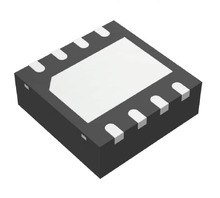Manufacturer Part Number
MCP2003-E/MD
Manufacturer
Microchip Technology
Introduction
The MCP2003-E/MD from Microchip Technology is a robust LINbus transceiver designed to interface between a microcontroller and the physical LIN bus. It facilitates reliable communication in automotive and industrial applications.
Product Features and Performance
Implements LINbus physical layer specifications
Supports LIN 1.X, 2.X, and SAE J2602
Provides robust ESD protection
Integrated termination resistor
Low-power mode with wake-up capability
Thermal shutdown protection for increased reliability
Product Advantages
Enhanced ESD protection minimizes risk of damage due to static discharge.
Built-in termination resistor simplifies board layout and design.
Supports wide operating voltage range (6V to 27V) for diverse application needs.
Low-power mode with wake-up increases efficiency in power-sensitive applications.
Key Technical Parameters
Protocol: LINbus
Number of Drivers/Receivers: 1/1
Duplex: Half
Receiver Hysteresis: 175 mV
Operating Temperature: -40°C to 125°C
Voltage Supply: 6V to 27V
Mounting Type: Surface Mount
Package / Case: 8-VDFN Exposed Pad
Quality and Safety Features
Thermal shutdown protection prevents device failure under high-temperature conditions.
Meets stringent LINbus physical layer requirements for automotive applications.
Compatibility
Compatible with LIN protocol specifications versions 1.X and 2.X, as well as SAE J2602.
Application Areas
Automotive networks
Industrial control systems
Building automation
Product Lifecycle
Status: Active
This product is not nearing discontinuation, with ongoing support and availability.
Several Key Reasons to Choose This Product
High reliability and robustness suitable for automotive environments.
Supports a wide range of supply voltages, enhancing versatility across different systems.
Low-power operation with wake-up function is ideal for power-sensitive applications.
Includes quality and safety features like ESD protection and thermal shutdown, ensuring long-term reliability.
Straightforward integration into existing LIN networks due to compliance with LIN specifications and built-in termination resistor.




 MCP19122T-E/MJMicrochip
MCP19122T-E/MJMicrochip MCP19214T-E/MQMicrochip TechnologyIC REG CNTRL MULTI I2C 28QFN
MCP19214T-E/MQMicrochip TechnologyIC REG CNTRL MULTI I2C 28QFN MCP19215T-E/S8Microchip TechnologyIC REG CNTRL MULTI I2C 32QFN
MCP19215T-E/S8Microchip TechnologyIC REG CNTRL MULTI I2C 32QFN